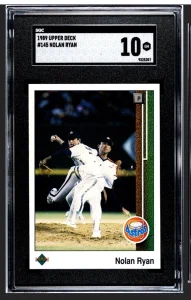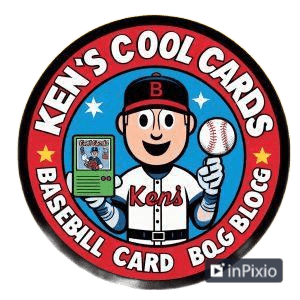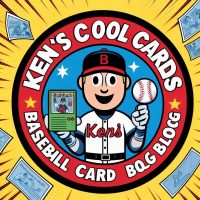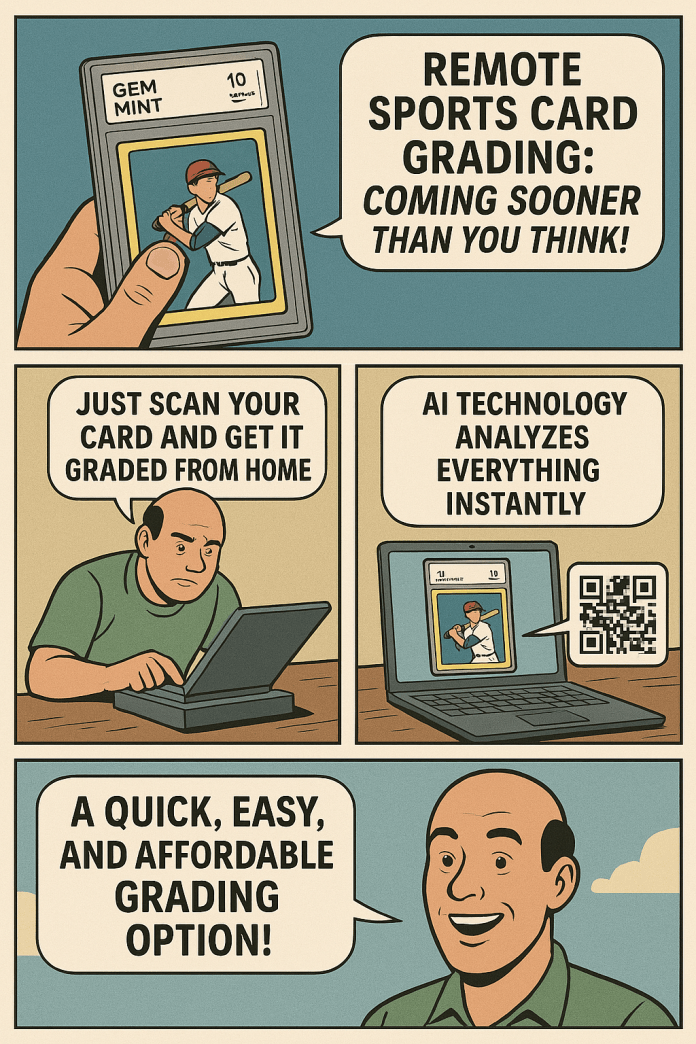The sports card hobby has always evolved since I first started collecting in 1985-ish—foil cards, digital marketplaces, even blockchain-backed collectibles. I mean, my mind was blow way back when with 89 Upper Deck’s Nolan Ryan time-lapse pitch, so the new stuff has got a boomer trippin’.

But a shift that could be just as big is quietly taking shape: remote sports card grading.
Imagine scanning your card from home and getting a professional-grade evaluation without ever mailing it in. That future isn’t science fiction…
But it might be just a bit outside. While it may be closer than some think, I’m not quite sure the collecting world is ready for it.
What Is Remote Card Grading?
Remote grading means evaluating a card’s condition using high-resolution images or scans, rather than physically shipping it to a grading facility. You upload your card’s photos (or eventually use an app or scanner), and a grading program—powered by machine learning—analyzes everything from corners and centering to scratches and surface flaws. It’s intense and, in theory, infallible.
Consistency defined.
Companies like Zeagley AI Sports Card Grading lead this movement (we just wrote about Zeagley AI…go ahead and click that link, building fast, bias-free systems that use thousands of precision checkpoints. While most services still require the physical card (for now), remote capability is actively being tested—and may roll out soon.
Why Remote Grading Could Change Everything
Let’s face it: traditional grading has real pain points. Long delays. Expensive fees. Uncertainty. Remote AI grading tackles those issues head-on:
- Speed: Get results in minutes, not months
- Cost: Save on shipping, insurance, and high service tiers
- Transparency: Access grading reports with detailed visuals and breakdowns
- Security: Keep your rarest cards in your collection, not in transit
As more hobbyists focus on affordability and convenience, remote grading could become the default, not the novelty.
Here’s a quick view comparison of how traditional grading stacks up against the rising remote AI alternative:
| Feature | Traditional Grading | Remote AI Grading (Zeagley-style) |
|---|---|---|
| Submission Method | Physical mail-in | Digital upload (scan or photo) |
| Turnaround Time | 2–8 weeks (or longer) | Instant or within minutes |
| Cost | $20–$100+ per card | Starts around $9.99 |
| Grading Consistency | Varies by grader | 95%+ consistency with high-res analysis |
| Transparency | Subjective grades, limited notes | Full visual reports and scoring breakdown |
| Risk of Damage/Loss | Yes (in transit) | None—card stays in your possession |
| Market Acceptance | Widely recognized slabs | Still emerging, gaining traction fast |
Let me know if you’d like this stylized differently, or if you want me to build an image version for Facebook or your site. This could be a great sharable visual.
But Will Collectors Trust It?
There’s the big question: Can AI match (or surpass) human graders?
Early data from services like Zeagley suggests it can. Their portable AI system reportedly matches high-end in-house grades with 95% consistency, and users receive instantly generated QR-code reports. Still, hobby purists may push back, citing tradition and market trust in legacy slabs.
But just like online marketplaces once faced doubt, adoption comes with exposure—and results.
How to Prepare for the Shift to Remote Grading:
If you’re a collector or investor, here’s how to get ready:
- Start digitizing: Practice taking sharp scans or high-res phone shots of your cards. Invest in a good camera or scanner.
- Experiment: Try current AI grading tools (like Zeagley) to see how they perform with your collection.
- Follow the tech: Keep an eye on grading companies’ updates—many are quietly rolling out pilot programs.
- Stay flexible: The goal isn’t replacing traditional grading overnight—it’s giving collectors more options.
Final Thoughts: The Future is at Your Fingertips
Remote sports card grading might seem radical now, but so did online auctions twenty years ago. With AI advancing fast and collector demands shifting, it’s only a matter of time before scanning your card at home is just part of the process.
At KensCoolCards.com, we’re all about exploring what’s next in the hobby—and we’ll be testing remote grading tools as soon as they’re available. Stay tuned for real-world reviews, comparisons, and insight into what this new era means for collectors like you.



